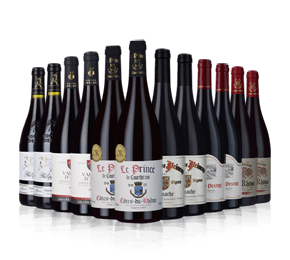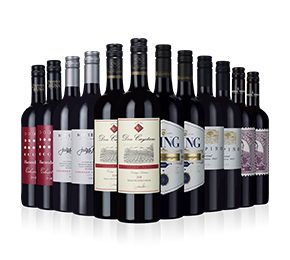Filter by
- £107.88 per caseSAVE £40.00£95.88/case
- £400.00 per caseSAVE £2000.00
- Packed with passion fruit freshness, Split Rock is a top-selling Kiwi Sauvignon for good reasonfrom £11.99 per bottlewhen you mix 6+SAVE £36.00
- Every vintage The Gooseberry Bush hits the mark for flavour and value - super fresh and citrusy.from £6.99 per bottlewhen added to 12 other bottlesSAVE UP TO £72.00£7.49/bottle
- Bright, peachy, citrusy Chardonnay from top-value Portugal and an excellent winemaker£2.70 per bottle
- Rich, rounded, yet crisp southern French white. As delicious as the much-loved red edition£11.99 per bottle£9.99/bottle
- £89.94 per case
- £119.88 per caseSAVE £6.00
- £35.99 per caseSAVE £111.95
- £129.99 per caseSAVE £80.21
- £299.99 per caseSAVE £29.95
- £200.00 per caseSAVE £65.44
- £165.99 per caseSAVE £734.01
- £92.99 per caseSAVE £62.89
- £179.99
- £69.99 per case
- £129.99 per case
- £99.99 per caseSAVE £217.41
- £129.99 per caseSAVE £189.89
- £129.99 per caseSAVE £237.89
- £149.99 per caseSAVE £169.89
- £0.00 £42.98 per caseSAVE £42.98
- £111.11 per caseSAVE £48.79
- £111.11SAVE £48.79
How is white wine made?
White wines are made differently from red wines in that the grape skins are not used in fermentation. That means that while most white wine is made from green-skinned grapes, you can make white wine from red grapes (Champagne is a great example).
Wine is made from fermented grape juice – which in itself is colourless. It’s just the skin of the grape that is coloured. When making white wine, the grape skins are removed before fermentation, resulting in the wine’s transparent or pale yellow colour. In contrast, winemakers include the red and black grape skins when fermenting red wine, delivering a deeper colour.
Once the grape juice is fermented, white wine is left to mature. This may involve a very quick stay in stainless steel tanks, which help to keep a wine’s fresh and fruity characteristics, or an extended sleep in oak barrels, which adds to a wine's depth and complexity. How long white wine is left to mature varies – some wines are bottled after a few months, while others benefit from years of ageing. Other factors, such as the yeast used in fermentation, the temperature at which the wine is fermented, and decisions about malolactic fermentation (science bit: the process that softens the wine’s acidity), can all influence the final taste and aroma of white wine.
As you can see, a lot goes into making white wine – the type of grape, coupled with different winemaking techniques. But that means there’s an equally vast range of white wine to explore and enjoy, from the light and zesty to the rich and full-bodied.
What are the different types and styles of white wine?
The different styles of white wines come largely from the grape varieties they are made from, each bringing different flavours and aromas. There are somewhere close to 600 different white wine varieties across the world … which means an awful lot of styles to explore. Here’s a closer look at some of the more well-known white wine styles and ideas for food pairings to bring out their best:
Chardonnay: This versatile wine offers a variety of flavours, depending on where it’s made. From the zing of lemon zest and mineral undertones in France to the warmth of baked apples, vanilla and tropical fruits in Australia. Try a glass with grilled chicken, creamy pasta dishes or seafood such as lobster.
Chenin Blanc: depending on the winemaking style, Chenin can be anything from lean and minerally to rich in honey and apricot flavours. Dry Chenin has become a staple of South African winemaking, but it also makes fabulous sweet and sparkling wines in France. It works exceptionally well with Asian cuisine, roasted veggies or a selection of soft cheeses.
Pinot Grigio: this easy-drinking Italian wine is celebrated for its characteristic mix of pear and citrus flavours. Keep it Mediterranean with Italian foodie favourites such as antipasti, light salads and freshly prepared seafood dishes.
Riesling: a highly aromatic wine bursting with peach and crisp green apple flavours. Off-dry styles offer a delightful mix of fruit and honey, while refreshingly dry Rieslings zip and zing. Try with Thai dishes, sushi or pork-based meals.
Sauvignon Blanc: perhaps the world’s current favourite style of white wine, Sauvignon is known for its punchy flavour and zingy acidity. Styles from New Zealand in particular overflow with tropical flavours like grapefruit, lime, passionfruit and green pepper. A glass can work well with various dishes – from goat’s cheese and green salads to grilled shrimp.
Viognier: this classic of the Rhône Valley is packed with exotic flavours of peach, apricot and hints of vanilla, all wrapped up with sweet floral aromas. Reach for a chicken curry, grilled fish or roasted vegetables as a good pairing with a glass.
Each variety, with its unique flavour and aroma, adds to the array of white wines available to wine lovers.
Learn more about the most popular types of white wine.
What is dry white wine?
Dry white wines have minimal residual sugar left over from the winemaking process, resulting in a crisp and refreshing drink. They tend to showcase citrus fruit notes, often with aromatic layers of herbs, minerals and delicate white blossoms. The acidity in dry white wines can also be more pronounced. Classic examples of dry white wines include:
Chardonnay – which ranges from buttery to mineral-driven.
Pinot Grigio – known for its light and crisp character.
Sauvignon Blanc – prized for its vibrant and herbaceous profile.
What is sweet white wine?
These wines owe their sweetness to a higher residual sugar content. This is achieved by stopping fermentation early, which preserves the grape’s natural sugars. Sweet white wines often exhibit a softer acidity than their dry counterparts, with flavours ranging from subtle floral notes such as honeysuckle to vibrant tropical fruits. Classic examples of sweet white wines include:
Riesling – late-harvest varieties are bright, complex and delicious.
Sauternes – a luxurious dessert wine from Bordeaux.
Moscato – typically sparkling wines made from the Muscat grape.
What are the most famous white wine blends?
White wine blends are created by skilfully combining multiple grape varieties, resulting in wines with complex flavours and aromas. Famous examples of white wine blends are:
Bordeaux Blanc – from France’s world-famous Bordeaux wine region. This blend is made from Sauvignon Blanc, Semillon and Muscadelle grapes.
Champagne – a sparkling wine produced by expertly blending white Chardonnay grapes with its red-skinned siblings – Pinot Noir and Pinot Meunier.
Rhône-style white blends – made from Viognier, Marsanne, Roussanne and Grenache Blanc these wines tend to be rich and more aromatic.
How do I serve white wine?
To get the best from a glass of white wine, serve it at the right temperature, typically between 7-12°C. While some wines may have specific serving recommendations, this range is generally a good bet. Opt for a classic wine glass with a narrow bowl and tapered top when pouring, as it amplifies the wine’s aromatic profile. It’s a good idea to hold the glass by the stem to avoid warming the wine with your hand.
How long does white wine last after opening?
After opening, white wine is best stored in a cool, dry environment, like the fridge. If properly resealed, its freshness can be maintained for a while:
Light-bodied wine varieties like Pinot Grigio remain drinkable for up to 3 days.
Medium-to-full-bodied wines – especially Chardonnay – have a fridge life of 3-5 days.
How do I store white wine?
There are a few things to consider when storing unopened white wine:
Temperature: avoid fluctuating temperatures – a consistently cool environment is best.
Light: sunlight and artificial lighting can compromise a wine’s structure and style, so keep your bottles in a dark storage area.
Humidity: a 60-70% humidity level will help prevent corks from drying out.
Vibration: store your white wines away from sources of vibration, such as washing machines, to prevent the sediment in the bottle from being disturbed, which can accelerate ageing. A wine fridge, garage or cupboard under the stairs are good options.




























